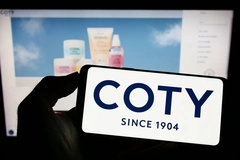Playing Lego with molecules: Greenitio uses chitosan for a petrochemical-free industry
Key takeaways
- Greenitio is modifying chitosan-derivatives to replace petrochemical ingredients in cosmetics and personal care.
- The company is using natural feedstocks without solvents or chemical waste.
- It focuses on bio-based alternatives that meet performance needs, while not compromising on human or environmental health.

Greenitio has received US$1.5 million in funding for its chitosan-derived feedstock, which is used to create natural cosmetic ingredients. The materials company focuses on functionalizing natural feedstocks to create sustainable derivatives.
Personal Care Insights speaks with Didier Vermeiren, COO and head of strategy at Greenitio, about his vision of the natural cosmetics industry, why alternatives to petrochemicals must become the norm, and how harmful ingredients need to be replaced.
The company works with different types of materials, but highlights chitosan, a polysaccharide extracted from mushrooms.
“The specialty chemical industry as it exists today has been largely built on petroleum — it’s over a US$600 billion market. Specialty chemicals are used in every industry and every vertical you can think of. They [also] had a head start of over 100 or 150 years,” says Vermeiren.
“We see more and more natural ingredients being introduced in the market. Of course, you cannot expect these new natural ingredients to perform the same as these specialty chemicals. These specialty chemicals had many resources and petroleum to create all these kinds of specialty derivatives.”
 The company modifies natural feedstocks in its green process without organic solvents or chemical waste.The company modifies natural feedstocks in its green process without organic solvents or chemical waste.
The company modifies natural feedstocks in its green process without organic solvents or chemical waste.The company modifies natural feedstocks in its green process without organic solvents or chemical waste.
“We play Lego on a molecular level, where we have a long chain and attach other molecules to it to create a derivative. That is very distinct and very different from its original, so we can modify it to create and give it certain properties that the industry needs.”
How do chitosan’s properties work if you compare them to microplastics or petrochemicals?
Vermeiren: The objective and goal are to replace these synthetics one-on-one. For example, we can replace a certain film former with the bio alternative. We look at the properties of synthetic petrochemicals.
The goal is to create a formula at the final stage. Once we have a derivative, we formulate it so that we say, ‘Hey, this is an application with the synthetic, and this is an application without the synthetic without with our bio-based alternative.’ An additional benefit of these biopolymers is that the materials come from a natural source, so they inhibit some bioactive properties that we can also functionalize.
Are you seeing a shift because the EU deforestation regulation is taking effect later this year?
Vermeiren: Yes, there is definitely a demand, knowing that some of the synthetics are in rinse-off personal care products. The microplastics caused by such products have a negative impact on the environment. They end up in water systems, eventually in our food systems, and in our bodies.
Formulating a product for every different market is a lot of work. As a brand, you say, ‘I make a product that needs to be good, perform, and align with the mission of that particular company.’ They wish to produce a product that can be bought across the board. So it’s important to have this regulation, and for us as an ingredient supplier.
 Vermeiren says formulating a product for different global markets is a lot of work.Have you noticed a shift in consumers' prioritization of natural or environmentally friendly ingredients over performance?
Vermeiren says formulating a product for different global markets is a lot of work.Have you noticed a shift in consumers' prioritization of natural or environmentally friendly ingredients over performance?
Vermeiren: Across the board, consumers are more aware and knowledgeable about what goes into these products. I think part of the trend is to keep buying products without synthetics, but consumers also look for products that bring performance. So you’ll see brands disclosing more about what ingredients they’re using, and the concentration, so that the customers buy for value.
Do you also have measures to ensure that the final product is free from microplastics and petrochemicals?
Vermeiren: From our side, we have less impact on dictating what these other materials can be and what the packaging should be. But the pool that we’re getting from the market now is primarily still companies that are looking for these biodegradable natural alternatives that are not only sustainable but also the most cost-effective and better in performance.
What do you expect from the natural cosmetics industry in the future?
Vermeiren: I think this trend will continue and grow as we learn to functionalize and improve the variety of natural feedstocks into better derivatives. The future of specialty chemicals should not be harmful to human health, the environment, or the planet. This trend is unstoppable.












